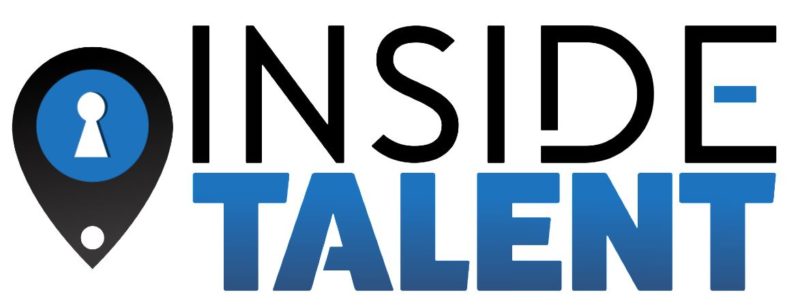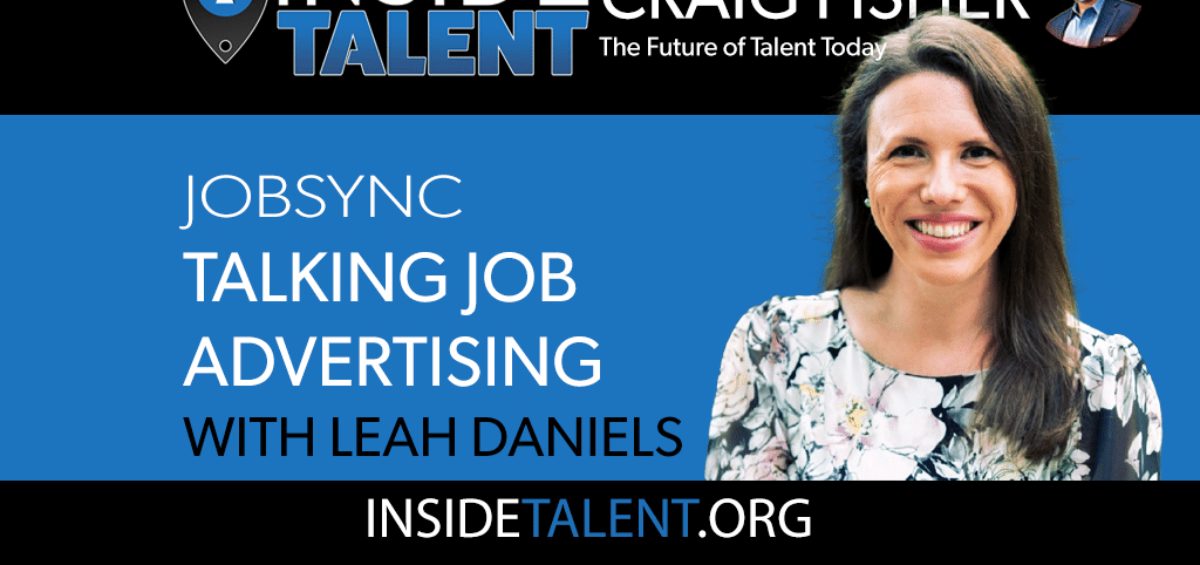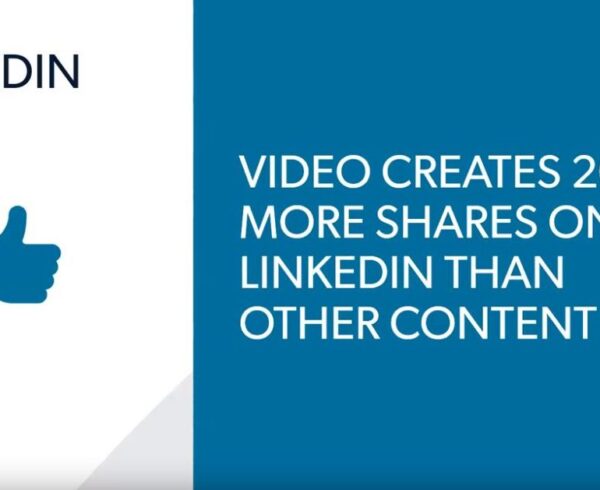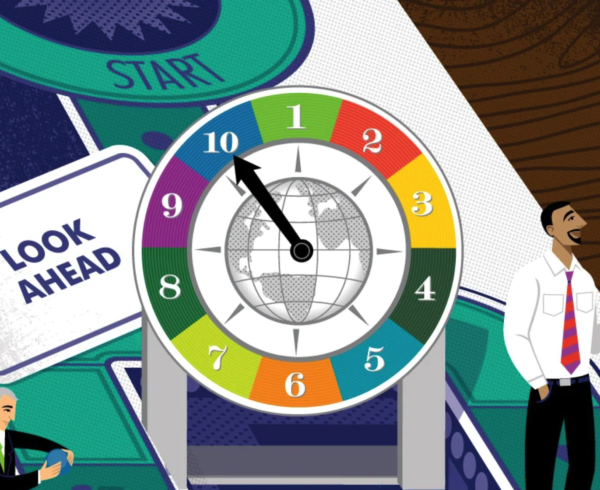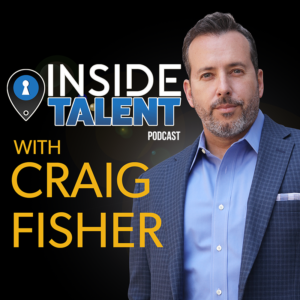Leah Daniels knows a thing or two about job advertising, She spent nearly 5 years as a leader with one of the top programmatic advertising platforms for jobs, Appcast, and is now a leader with JobSync – one of the top job distribution platforms that created the Native Apply from any job board or ad. In this episode, Leah and I break down the downfall of Facebook’s jobs marketplace, what’s happening with Indeed, and how to get the right qualified candidates applying to your jobs without overspending on your campaigns. Leah is fun and funny. But this smart lady brings a ton of great insight for any employer looing to up their hiring game.
Full text:
Leah Daniels and Craig Fisher
Thu, 2/10 8:35AM • 37:36
SUMMARY KEYWORDS
candidates, job, ats, apply, sync, people, facebook, applicant tracking system, leads, companies, employers, google, left, easy, ad, questions, volume, recruiting, numbers, platform
SPEAKERS
Craig Fisher and Leah Daniels
00:00
Hey, it’s Craig Fisher. I am here with Leah Daniels. From job sync. Leah, it is great to see you. Welcome to Inside talent.
00:09
It’s great to see you again. It’s been a while. Indeed.
00:13
It has been a while. And I, you know, I’ve known you through multiple iterations of amazing things that you’ve done. And it’s it’s one of these wonderful reunion times where people are starting to get together again in real life. And so maybe we’ll get to see you at an actual conference soon. Fingers crossed. Yeah. We may try to get you to come out to the talent, that live conference in Austin in March,
00:44
march. That’s like next month,
00:47
I guess. Right. March 11. And then that’s, that’s Austin, and then Dallas. We’re doing talent that live in conjunction with the candies. November 2, and third. Yeah. So we’ll have the candies gala Awards Gala. As part of talent net live, November 2, and third in Dallas. It’s exciting. So you should come for that. I’ll make a case.
01:12
All right. Sounds good. Let’s do it.
01:15
Alright, so lots of things happening. I have been working with job sync for a while and have implemented some solutions at various organizations. And notably, a lot of hourly and retail type stuff we’re using, kind of still are using the service to create a native apply on Facebook, with the Facebook jobs marketplace, but that’s going away. It is that’s going away. So I want to talk to you about that. And then I want to talk to you about some things that job snake is doing for other platforms, and then how we kind of, you know, avoid getting sunk by Facebook’s evil plans. But first, why don’t you tell us about you and what’s been going on with you?
02:11
Ah, well, thanks for having me, I’m excited about all things you guys are doing and a lot about what job sync is up to. I joined back in August, so just a few months, I still feel like I’m brand new most days and super excited to join this company. In my sort of career, as we all have them, I’ve seen, I swear 1000s of products over the years. And what I got really excited about here is job Sync has put their fingers on a problem, that companies really have a big problem, they almost always ignore it, because it’s so big and so painful. And so they found this problem with a solution that’s implementable and can solve an actual problem that companies have. And I love that right, I get excited about solving problems. And so I’m working with Alex and the team to try to help a lot of enterprise companies take the dollars they put into the market and get, you know, double and triple that return in candidates by doing some very simple things that doesn’t have heavy lifting on the recruiter side.
03:21
Yeah, and it is an easily implementable solution. That, you know, I found to be wildly effective, we’ve actually done a case study about it with job sync, and we helped one notable retailer to increase their candidate flow by 14 100%.
03:44
Yeah, the numbers are just crazy over a period
03:47
of two weeks. Right. And for, you know, a
03:49
mild side, I’ve seen two and 3x return, which is just crazy for most companies, because they don’t have the, the line of sight to even contemplate what to do with that kind of volume. Right? And but you know, they don’t want it so.
04:09
Well, and therein lies the rub. Yeah, yeah.
04:12
And then, you know, with jobs, which I love is that they’re recognizing, right, we recognize that, you know, increasing your volume by a factor of 235 10x. More than that cannot exist in a standalone environment, you have to then ask the next question, which is, how are you going to handle that? And what are the things you’re doing that we can automate? Right? Are you reaching out to them by phone? Can we text them instead? Right? Are you taking a human being and saying, oh, I need to send that candidate to the Dallas Texas store. Can we just route that to the GM, right, what can we do with technology and automation that will allow your business to consume that level of candidates and be effective with it and not take that opportunity and then squander it when Have you gotten those candidates?
05:02
Yes, absolutely. And there is a hiring manager on hiring manager, talent acquisition leader that I’m going to send this recording to immediately afterwards. I’ve got the same request, I want X number of candidates over X number of months from these two platforms, and I want to spend, how much money do you think I should spend on ads? Yeah, I’m like, alright, you can do that. Or, or you can have a plan to actually convert those people. Yeah. Because that’s, that’s the issue, right? We can get you the candidates, you can spend the money. And if it’s tweaked, right, and you do all the right things, you can, you know, kind of get more candidates, especially if you have job sync as a layer in between for native apply. But then, what are you going to do? How are you going to route those people? How are you going to communicate with them quickly? Because speed is the name of the game. I’ve been preaching this for years, especially the last two years,
06:00
the average is still 10 days to first contact. Right? It’s the same 10 days. And that companies, you know, are back to them that fun thing where they offer jobs, like on the initial screen. So 10 days, and that candidates already gone to work.
06:16
Oh, long time ago. Yeah. Crazy. Well, and it. Okay, so this is this is funny. We make it too easy to apply with easy apply. Yeah. Because there’s no screening at all. Right? And so people just click, click, click, click click, and they’re not keeping track of it. There’s no way to keep track of it. No, right. I mean, no,
06:40
I mean, at least at least, retail evolved a little. I don’t know, if you remember back in the day, when it was like, you liked this job? Do you want me to automatically apply here these 10. And so we have evolved a little as businesses and job boards, which is great. So there’s at least some level of interaction. But yeah, these these carriers can’t remember. And also, because as a group, all of us has talent acquisition professionals and technology providers, we have educated candidates incredibly well, that they have to apply to hundreds of jobs to get a job.
07:12
That is so frustrating. And we did that we did well, because we complain about our own applicant tracking systems. We didn’t and it’s luck if you get through, right. It’s not skill. Look, we can tell you what to put on your resume. Oh, you need an ATS friendly resume. You know what, that is not the problem. So all these easy applies great. But we don’t look at our own applicants as employers. Right? We, alright, we get all these leads. They’re free leads. Yeah. And what do we do with them? And there’s in sales, we are very vigilant, very good at lead conversion, yes. But we’re not in recruiting for
07:55
what I heard the other day someone say, on a podcast of some sort, that a recruiting is the most inefficient function in US corporations. We do your individual ads to some degree for every single job, I think about it like a company, we would never do an individual ad to sell a product to only one person, right. But we will do an individual ad to sell a job to only one person.
08:24
That’s right. Only one person is going to take that job. Yeah.
08:27
But so that funnel, it’s so inefficient from the minute you start with that statement to everything that happens next.
08:35
But Leah Wait, he says mockingly What if we just advertise an evergreen job and send that candidate directly to our applicant tracking system where they can choose whatever job they want?
08:50
Well, sometimes that’s a good idea.
08:54
It’s not a good idea. Because that’s too many choices. That is also not progress. That is also hit a paywall and have to log into our applicant tracking site.
09:05
And and also, you know, as an for a while I managed the search product over for Monster and the resume search product. And I one of the one of the things that was really evident is that the search products are all looking at past skills to match with past requirements. But neither sort of concept of the job posting or the search, understand progression, right? Are we talking about a person who’s happy in sort of a like, linear role as they move forward in their career, and maybe it gets more complex, or maybe it’s a more interesting company or industry versus other people who are on an upward trajectory. And so what they’ve done is not reflective on what they’re gonna do next. And these matching algorithms just don’t have that construct to handle it. So it is interesting, right? There is an element where we still need the humans to help make those matches to work?
10:03
That’s correct. And Job Sync has an interesting solution for that. And, and I’ve used it. So it’s not always upfront that we get direct API access to an applicant tracking system for job sync to be able to create a candidate record from a native apply. And let’s, let’s put a pin in that and just distinguish real quick between easy apply and native apply. Easy apply on indeed, for instance, just takes the candidates information from indeed and sends it to the employer, and almost always
10:42
to an inbox right that’s in the correct location,
10:46
generally not integrated into the ATS, but a native apply which job sync created, and ask screening questions, and then send automatic replies and route the the candidate wherever you want to route them.
11:03
Yeah, and that might mean into your ATS, it might mean into your CRM, it might mean into your ATS and into hiring managers inbox, right? Um, but let’s
11:13
say for the sake of argument that we’re not, we’re not in the ATS yet, right, we’ve got to go through HRIS security hoops, and that’s going to take three weeks. I mean, that’d be great. And but in the meantime, all these leads, go to a spreadsheet. And Job Sync has a wonderful tool where you can either blast them all with individualized messages and first name and or contact them individually and start a conversation and or contact them by phone from your desktop. And or contact them by text if they’ve opted into that.
11:53
And the texting was super interesting. I just got a bunch of data around response times. And the punch line is, if you look at a bell curve, and you’re looking at the the laggards the 70, the back 30%. Right. Right. You’re talking about 10 minutes. Oh, yeah. 10 minute response time for them to respond to you. Then at rates in the 50 to 75% range, depending on the industry, right? We do you see some high variability with the different industries. But I mean, those are numbers, you’ve never seen an email, not now they used to exist. And we’ve and they’ve declined, you’ve literally never seen these numbers in email. And so you’re lucky. So this is just an amazing sort of concept that I’m shocked that the US market has not adopted more of because our candidates have, in fact, as humans, we have
12:49
they prefer it. They want you to clearly
12:53
yes, so much easier. And yet we aren’t adopted. It’s just fascinating to me as an industry that we are struggling to meet our candidates on the medium they want to be met at if my
13:03
pharmacy can’t contact me that way. And let me know what’s going on. I don’t want them I’m gonna go somewhere else. Wait, your prescription is ready. Let’s write. That’s exactly.
13:13
We’re better. Your prescription is ready, and we’re mailing it to you.
13:17
So, alright. Facebook, jobs marketplaces gonna go away. It is, what’s the rationale there?
13:26
So my theory, right, because I don’t have anyone whispering in my ear. What’s actually happening is Facebook has some pretty core tenants about their business. Right? You know, grow revenue. I mean, if they say that out loud, but clearly, that’s one of their core tenants. Yeah. Don’t lose $2 billion in market cap overnight, and
13:47
do your focus,
13:48
or 200. But more
13:49
importantly, stay focused.
13:53
Keep your, your audience engaged on the platform. So keep them there. It’s been a while since I checked, but there’s a one point I looked at, I think their average engaged user spends 45 minutes on Facebook a day. I mean, that’s an insane metric. And I think that’s probably low. Now. I bet the numbers are higher. And what happened when you look at the evolution of Facebook jobs is it started holding true to that core tenet? It really did. They were integrating with some smaller SMB ATS is that kept people on the platform. They were looking at the SMB market to help local restaurants and hair salons and auto mechanics, get candidates and keep them all engaged through the Facebook platform. And somewhere along the line. I think one of the or two or all of the ATS is and maybe a few of the other players in the space got in their ear, and we’re like I don’t know what you want. Do but like candidates come to our career site they apply on ETS career site. That’s how this works. So we started sending candidates off, right. And you can see that, and despite the fact that Facebook provided a way to do what we call that native apply, or an integrated direct apply experience, that wasn’t widely adopted. And so we ended up in a situation where candidates were leaving the Facebook platform, which is a violation of the core tenet of Facebook. And, you know, my, you know, my, my spider sense says that that has a big part of what ended up being the demise of this product is that we were violating that, that really important part of Facebook’s rules of how they keep an audience engaged.
15:50
So we don’t as employers yet have the sort of capability to boost a job, you can still post jobs to Facebook, but then you have to get to your company page, but then nobody will see it. Unless you can prove it, you got to boost it, you can post it and do that
16:13
manually. On the on the posting your jobs onto their site one
16:18
at a time. You can get a feed in there, in theory, it’s it’s tricky, but then you have to individually boost those jobs for anyone to see it. But we don’t currently have the capabilities like other advertisers do to basically have your shop inside of Facebook. Correct? Right. Right. And as employers, I mean, that that needs to evolve, but we’re not there yet. So the ad is ultimately still taking people off site. Correct. But now Facebook’s making money off?
16:50
Well, a little bit, right, because for whatever boosting is happening, I think, and what we are sort of leaning into is that they really want to see recruiting go head to head on a pricing basis with their standard advertisers, and get your jobs into the stream. Just like any other advertising might happen. And so that’s where this world will change a little for Facebook. So one of the things that was great about the marketplace is that as a job seeker, you showed intent, by going there, you are raising your hand and saying this is my interest level,
17:30
you are searching on a very large database. Yeah.
17:33
And now, I’m curious to see how Facebook does figure out intent. And I’m sure they will, because these guys are geniuses, and there’s lots of them all in one room that are very smart. We say that, um,
17:47
I hear they’re having trouble hiring engineers right now, that well,
17:50
they’ve always been right, like, but it’s a whole other issue. Maybe they should use Facebook jobs.
18:00
Or not even their own dog food over there for sure.
18:03
So so, you know, what I think we will see come out of this advertising approach is that there are and I always talk about, there’s tail, a two types of recruiting, right, we have these high volume recruiting shops where one profile lots and lots of people that we need to find that are very similar in different locations, but the jobs are similar. And then you’ll leave corporate America where it’s a one for one shot. I think that and that’s you know, 30 percentage of the market, I think Facebook is walking away from all of that. They’re just not interested in that part. And I think they’re walking away from the SNP. They’re just saying we’re not interested in that either. So really, the winners are going to be anyone who can figure out how to take job ads and make it more like a consumer shopping experience. Right? So starting to look at those ads in either do a singular visual ad for a truck driver or for warehouse worker security guard. There’s tons of these positions out there where we see at high volume need. Or even the I don’t know if you’ve seen it the almost like the array on Facebook, where you can go four or five different images. Yeah. From a shopping experience again, Oh, yeah. I’m looking for a CDL. I’m looking for local drivers. We’re looking for long hauls, and so forth. And so you have four or five different job types sort of combined into this array that you can you can scroll through and then engage and become a lead, which they will allow you to go off the user doesn’t go off platform, but their their information does. Their information
19:35
does also also I think, once and coming back to this, I think employers will and there’s going to be time intensive and a pain in the ass but I think employers will end up setting up a store. Yeah. of some sort for fears which, again, doesn’t put people on the ATS platform.
19:57
But you know, those forms that they’ve built Behind the scenes, the lead forms, those are fully integratable. That’s right, right. And they’re dynamic. So similar, you can pull jobs with questionnaires behind the scenes, and put those in front of the the lead form applicant, we’ll call them that. And so as an employer, you can sort of manipulate the market to work for you. So you can end up getting, again, high volume leads, I don’t, I don’t know if this will work for some of these more singular positions. But I do think in the high volume space, this should be an attractive option for folks.
20:31
So also, you could make that action button on an ad, go to a dynamic, job sync, pop up landing page, where leads are captured, and information is passed on. And candidate never has to leave the plan.
20:51
And we’ve we’ve already built the part where you can skip that and go straight from the straight from Facebook leads and not have to build that dynamic page in between. That’s right, that page is interesting, because I’m going to use this as a bridge. We’ve built this dynamic page now as part of a Google for jobs
21:11
right off on my list. All right. Good bridge. To that right, it
21:18
was not planned. But what you’re talking about is an interesting challenge that, you know, while I can talk about indeed and ziprecruiter and tell route, and the the companies that have gone all in on these easy applies, and then provided a way to add questions and be dynamic in what you’re asking. There are lots of job boards that exist in the market and other lead sources that aren’t there yet. Either. They’ve created still the static, easy apply experience where there isn’t a dynamic questions option, or they don’t have that at all. And in that case, we have this this sort of solution that allows you to send candidates from anywhere, although we built it specifically for Google for jobs and to allow companies to get that first spot in the Google for jobs experience, right? You really want that spot? Because if you don’t do that your job content is being used by job boards to create leads for themselves.
22:18
That’s right. Yeah, and a bunch of random job boards.
22:22
Oh, so many I’ve never even heard of.
22:25
I mean, you you you do a search. And there’s 35 People usurping your feed, or 35 little job board companies, you serving your feet and charging candidates. So yeah, in some cases, and both to kids and you if you want them. That’s right. It’s crazy. It is crazy. And so yeah, job Sync has done an amazing thing of getting placement for your job. And, you know, hint to all you recruiters out there that are using native apply, sorry, using Easy apply on indeed and other platforms, native apply is much better. And I can get give you all the cost per acquisition reasons in the world. If you just want to give me a ring, I’ll let you know. And, and so now, we’re at this inflection point where Google for jobs is starting to become really important.
23:23
Yeah, I mean, especially in this sort of week that exists with Facebook ending their jobs marketplace. You know, the the official date is February 22. But we’ve already seen that they are severely limiting. Yep, the access and sort of the interaction with it. So that is, it’s on a downward trend at a rapid rate right now.
23:45
Yes, it’s being deprecated as we speak, and new. You can’t start new. Correct. In any situation like that. And yeah, so I think I’m excited for job syncs. Future with Google for jobs and with, you know, native apply everywhere. And let’s talk a little bit about the jumping directly to the lead form. Okay. So, in Google for jobs, for instance, there’s if you’re just a regular advertiser, a lot of hoops that you have to jump through in order to get good placement. Especially Yeah, that’s right. Especially Yeah,
24:33
they’ve added they added a bunch more in October, right. Um, and I think it’s was good intention.
24:41
Thank you. Well, no, I
24:42
do I think it is. I so you know, Google. You know, I talk a lot over the years about indeed having a incredible focus on candidate experience. And that allows them at times to make really hard decisions. I think other than This is wouldn’t make, right, their decision to get rid of a lot of jobs from certain staffing organizations that they felt were not real jobs, right, that they felt like were more beat jobs. They that they walked away from a lot of revenue in doing making those decisions. Right Decisions. Another job that Yeah, right. I like truly impressive that they are confident and brave enough to make those decisions. I think Google does that at times too, right there focus on intentionally making sure the searchers experience whoever that searcher might be, is optimized for what their intent is. And one of the reasons I think Google for jobs exists? Well, there’s lots of reasons I think it exists, but one of them is that like flights and like shopping, right, the Google general experience is is not optimized for that intention. And lots and lots of searches start with the word jobs in it. That’s right. Right. In fact, you know, there, there’s been stats over the years that 60% 40%, whatever it might be, a job searches started at Google and not on a job board itself. And so, you know, indeed, clearly won the war for SEO, on that jobs term, and optimizing for that. And I think, you know, Google made a decision that before you get to the the, or, you know, the that SEO experience, they’re going to put in a jobs experience for you. That’s and you know, I think they’re doing what what any organization would do, which is slowly rolling out how you get all the content first, right? It’s just like indecent get all the jobs. So you can get all the candidates, right. So you can get all the employers so that they have a clear path. And I think Google is following that go well,
26:49
first, and so now, indeed, has flipped the script on how programmatic will work? Yes, because you now have to go through indeed, bid optimizer in order, everything goes to bid optimizer, and it’s it’s increasing CPAs. All over the place. drastically. And I saw I saw a report recently from your former employer, about the 41% increase in CPA s. That’s a made up indeed term, by the way. Yeah. Right. Just over the last couple of months. Yeah. Because
27:32
and there is a lot. There’s a couple of things right. Yeah, sure. You can point to it optimizer, and I’m sure that has something to do with it. But also you to look at the state of the market right now. That’s right. You know, we’ve lost in our, in our, you know, employment market, a couple million people just too late retirements in early retirements happening at the beginning of COVID. The number of people who have stepped out of the workforce because of now long term health problems, actually, it’s interesting.
28:00
And it’s problems as well. Yep. And then a number of women
28:03
who’ve stepped out because of childcare challenges, right? We’re still looking at a vaccine that doesn’t exist for under five year olds. Right. And so we still have a market in flocks, which has presented us with this challenge of 11 million open jobs and six and a half million people collecting unemployment, that those numbers don’t work for us. As you know, we’re at what 4% unemployment four and a half right now. Right? This is a country that seems to be happiest around five and a half 6%. So our numbers there. So indeed has something to point out and say look at it’s not us, it’s the economy Well,
28:37
in progress in programmatic advertising terms, that means it costs more to get someone to apply to your job. Yeah, because more people are bidding for that one person. Yeah. And right now, there’s a crazy stat there are two open jobs for every one. Potential us worker. Yeah. Which we’ve never seen that. No, nope. And in November, more people left their current job than have ever left the workforce before or left their jobs. So it was an outrageous number, but they’re not leaving the workforce. They’re leaving for different kinds of jobs, more flexible jobs, right, things like that.
29:26
There’s a tweet the other day that says something like every time my competitor says that they’re bringing their employees back into the office. I get to hire 15 engineers, you know, I’m talking about you saw that one too. I giggled a little but yeah, right that there. There’s a lot of people who realize that they are in a position to make some decisions around their career that maybe they didn’t feel like they could make before and so we are seeing the US workforce being pulled up. Right we’re pulling blue collar workers into the white collar workspace and then we’re seeing a reshuffling or almost like a you know realignment of employees in the professional space saying like this is this is not the world I want to work in, I’m going to shift and I can do that right now.
30:10
Right? We did a lot of work with Regis and Supercuts over the last several months, and hairdressers are walking away from that industry in droves to become customer service reps. Yeah, things like that. Because it’s more secure, it’s safer. It’s right, you get benefits. I mean, like all kinds of things, you can do it from home,
30:29
you don’t have as many back problems,
30:32
that it’s exactly right. You don’t know if you’re going to have to be open or not open, right? Yeah, all all these things. And that’s just one example. There’s lots of examples like that. And we’re in this scenario now, where we’re, you know, companies trying to attract customers don’t have the brick and mortar to do that as much. And so these call centers are wildly successful. Yeah. And so there’s just more of those jobs. And so we’re gonna see that and you know, that that just leads me to a million business ideas. But get back to indeed, there are ways to get that cost per acquisition down. Yep. But it requires a million little things. There’s not one fix. But one of the big fixes is get a native apply in there instead of trying to send a candidate directly to your applicant tracking system.
31:22
Because, well, and I think that one of the funny things about cost per apply, right, is that it doesn’t, all candidates are equal on that metric, right? Qualified or unqualified, all candidates are equal. And so the percentage of qualified candidates coming through becomes really important. You put your finger on.
31:44
So this leads me to your Goldilocks theory. Yes. All right, tell me.
31:50
So I, I’m a child, I don’t know if you know this. And so it’s fun to tell people this. Um, and it occurred to me that we are working in a world right now. For employers, so they have two options, you can go with indeed apply or zip apply, or tell reapply and choose your flavor. And you get lots of candidate volume. So your for your budget, your cost per apply, actually goes down quite a bit. So it’s much lower cost per apply. In the volume is high. Put your quality is questionable, because everybody heard anybody, there’s no screening, and there’s no way for your recruiter to screen when they get the candidate, right, they have to go and do the legwork, there’s a whole bunch of process you need to put in place to then understand. And you know, for the most part, those applicants go straight into an inbox. And so now you don’t have the tracking that you might be looking for. Or if you have EEOC requirements, you don’t have that in place, there’s a whole bunch of things that you’re missing. That’s right, it’s too hot. So you’re option two, which is what most companies do apply on company website. So candidate leaves indeed gets their favorite Leo clicks apply six or 12 times their favorite login screen, your login screen, that’s right, you may or may not leave at this point in time, most of them leave, sorry, then they can go through your applicant tracking system process, which they may or may not make it through. And then you get candidates on the other side, you get a lot less. But you have a lot more details, a lot more information. So the process for your recruiters is better. But the volume is missing. Right? And so that’s our two cold. So how do you just marry the two? Right? So that’s what we’re we joke about right? This is the Goldilocks zone, take the easy apply, let your job boards give you the advantages of an easy apply more mobile access, tap into different candidate pools that they’re providing, because you have enabled that easy apply functionality. And then add in those questions from your your ATS. And that can be job level questions that can be your template questions like your EEOC questions you might need. And then put the whole package right into the ATS so your recruiter can continue to operate with the quality information that they need. So that’s my Goldilocks zone gives you sort of the volume you’re looking for from that, that ETS or from that, indeed, or apply. But the quality you’re really after
34:22
for your guests are knockout questions in there. Exactly. It changes the game route those
34:26
right they can handle the routing at that point in time. And you really want to win. When you get candidates to through that process. Make sure you’re asking right Can we text you, let’s meet those candidates where they want to be met on the meeting. They want to be met on XM, let’s get those responses and get them into an interview phase if that’s where they belong or a phone screen, phase two, that’s where they belong next, so that you can not lose those opportunities when they’re presented to you as good candidates.
34:55
That’s right. So you just make one of those knockout questions and it’s right there in the native apply. Yep, Jobs sync, you know, it’s an opt in. And I found in looking at the leads that I generated with job sync from that process that close to 90% of candidates opt in to everything.
35:17
Yeah. Well, and I’ve seen now companies have decided that if you don’t opt in, they actually want you to just stop applying. Right, that they don’t have the capability internally to manage the 10% that that want an email or a phone call. Especially if you’re talking about high volume.
35:38
Yeah, I think you can hire Deloitte to fix all that for about $7 million. I will not you the average employer. And And can I just say no offense to Deloitte, it’s not the best results I’ve seen.
35:59
Enjoy, I think they’re lovely people
36:00
kidding there. I’m using them as your standard. Anyway. So I digress. I think that we’ve, we’ve come to the point where we understand what the solution should be. And I love you’re too hot to cold and just right. Metaphor. It’s good. Yeah, it’s good. So
36:25
I understand. In the room here,
36:29
with some screening and some ATS integration is just right. And your recruiters aren’t stuck doing all these non recruiting activities. Yep. It’s a big
36:39
part of the challenge, right? Is that how do you handle all of these candidates from a an easy apply? Right, your process can’t handle the lack of data. But you’re you can’t it’s can’t handle the requests from ATS.
36:56
I like it. Alright, so we had Daniel’s? This has been amazing. I think we’ve solved the world’s problems today. No, right. And just in an hour, just an hour. And I hope to see you soon at an event somewhere in real life.
37:12
I have not left. Is this so funny. I’m not left, like on a plane. It’ll be two years in a few days. Isn’t that wild?
37:20
Yeah. And I just got back and I’m leaving again tomorrow.
37:23
You’re a braver man. Also, you have less small humans running around your house. So that’s probably helpful to have a little
37:29
more flexibility than you. Yeah. All right. Well, thank you. Thank you.

